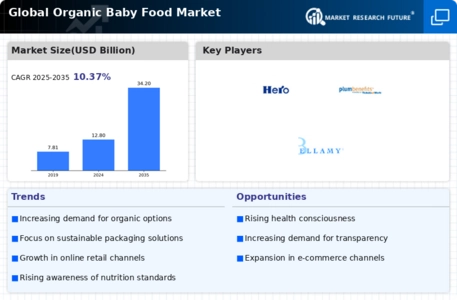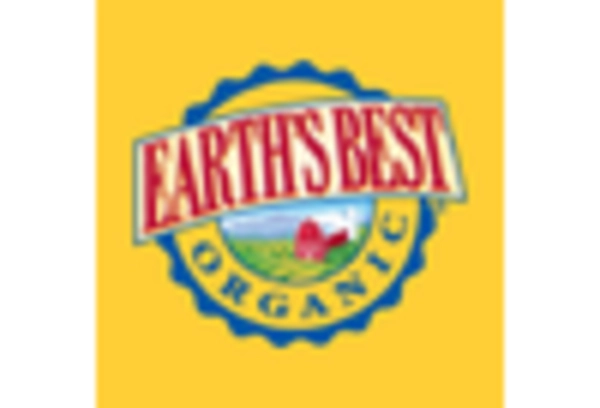Organic Baby Food Market Summary
As per MRFR analysis, The Global Organic Baby Food was estimated at 12.8 USD Billion in 2024. The organic baby food industry is projected to grow from 14.13 USD Billion in 2025 to 37.9 USD Billion by 2035, exhibiting a compound annual growth rate (CAGR) of 10.37 during the forecast period 2025 - 2035.
Key Market Trends & Highlights
The Global Organic Baby Food is experiencing robust growth driven by health consciousness and sustainability initiatives.
- North America remains the largest market for organic baby food, reflecting a strong demand for health-conscious products.
- Asia-Pacific is identified as the fastest-growing region, indicating a rising trend in organic consumption among parents.
- Prepared baby food dominates the market, while the milk formula segment is witnessing the fastest growth due to increasing health awareness.
- Key market drivers include health awareness among parents and sustainability initiatives, which are shaping consumer preferences.
Market Size & Forecast
| 2024 Market Size | 12.8 (USD Billion) |
| 2035 Market Size | 37.9 (USD Billion) |
| CAGR (2025 - 2035) | 10.37% |
Major Players
Nestle (CH), Danone (FR), Hipp (DE), Earth's Best (US), Happy Baby (US), Plum Organics (US), Baby Gourmet (CA), Little Spoon (US)


















Leave a Comment